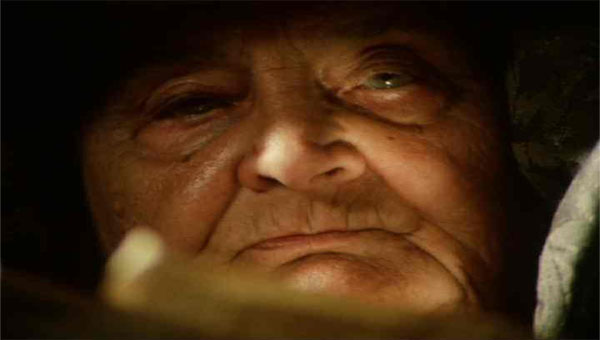Jos Stelling’s third film examines the painting of Rembrandt as he moves to Amsterdam in the latter part of his life. An extended study in light and composition, the film pursues Rembrandt’s – and Stelling’s – search for ideal representation of the world.
Grounding Rembrandt’s skill in his close examination of the world around him, we see some of Rembrandt’s more famous paintings being meticulously constructed within the narrative of the film. His child’s wet-nurse appears to him as Danaë, swathed in bedclothes, triggering both lust and inspiration in Rembrandt. A criminal dies and, over the course of a few minutes, his cadaver is probed by an assembly of doctors. Small details – the cast of a shadow across a cheekbone – are shot in extreme close-up until Stelling has recreated The Anatomy Lesson of Dr. Nicolaes Tulp. Expressive use of soft focus then enables the tableaux of the scene to blend seamlessly into footage of Rembrandt’s actual paintings.
The Dutch master himself is an enigmatic figure, rarely speaking and frequently acting with unremitting callousness, particularly towards the mothers of his children. Yet, his silence within the narrative forces the audience to look as he does. His verbal reticence enables him to better understand the visual elements of his world, even if this leads to a portrait of a man who is a failure as a human. Stelling’s portrait displays Rembrandt as a man who is irredeemably at odds with the world, and yet able to acutely render it.

